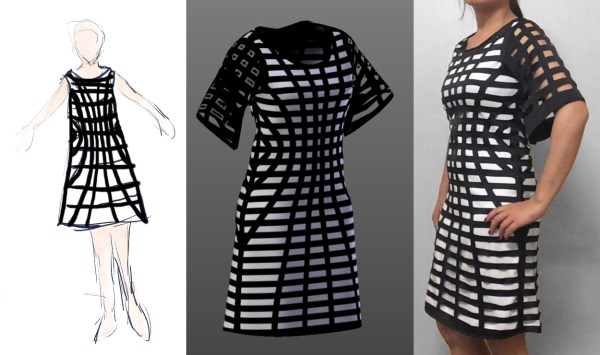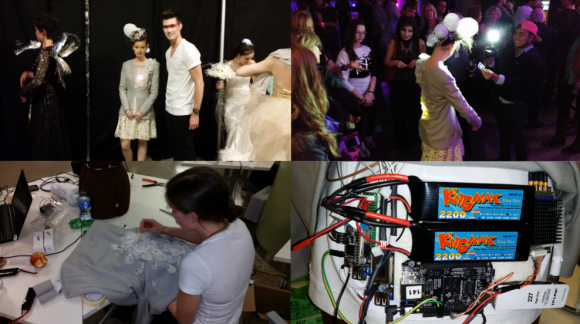[Dave Hrynkiw] wrote up some practical and useful detail around embedding electronics into clothing. It centers around his daughter’s “Starry Night” high school graduation dress, which is the culmination of a lot of experimentation in finding the best way to do things. His daughter accented the dress with LEDs to produce a twinkling starfield effect, and a laser-cut RGB pendant to match.
While [Dave] is the president of Solarbotics and pitches some products in the process of writing it all up, the post is full of genuinely useful tips that were all learned though practical use and experimentation. Imagine how awesome it must be growing up a child of a “local technology-hacking company” founder — akin to growing up as Willy Wonka’s progeny.
What advice does [Dave] have for making electronics an awesome part of garments? For example, the fact that regular hookup wire isn’t very well suited to embedding into clothing due to the need for high flexibility. There is also the concept of sequestering electronics into a separate Technology Layer — a must for anything that will be used more than once. The idea is to “build your technology so it can be isolated from the fashion aspect as much as possible. It makes building and maintenance of both the fashion and technology aspects much simpler.”
Slapping some LEDs and a battery pack into clothing might do the trick if all you care about is some bling, but if you want something that actually highlights and complements clothing while also being able to stand up to repeated use, this is a great read. A simple lighting effect that complements a design isn’t difficult, and there’s no need to reinvent the wheel or make the same mistakes others have encountered. Video is embedded below.
Continue reading ““Starry Night” Dress Shines On The Experience Of Multiple Builds”















